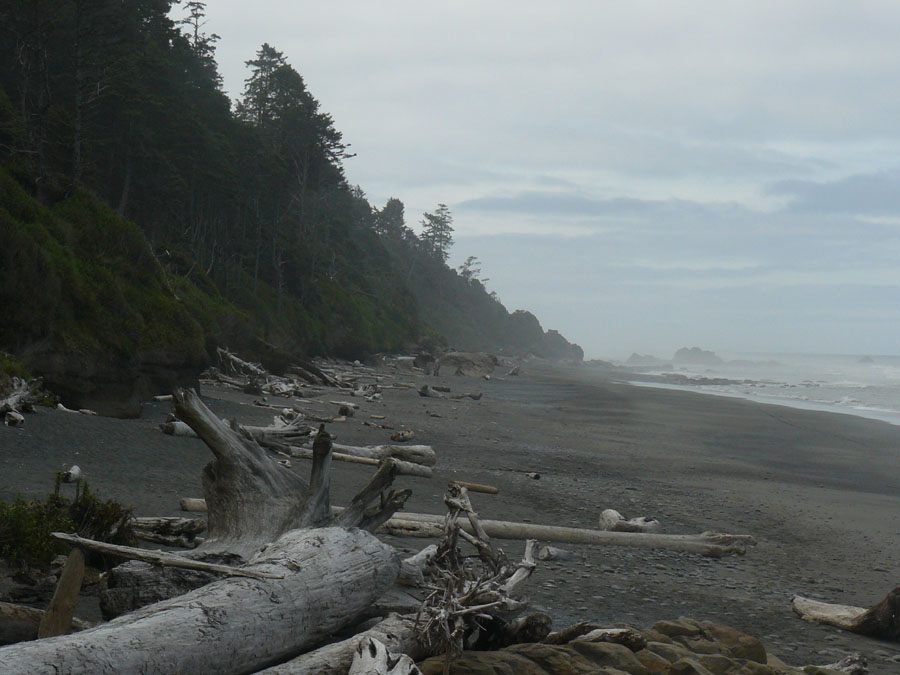 Location Taken: Ruby Beach, Olympic National Park, Washington
Location Taken: Ruby Beach, Olympic National Park, Washington
Time Taken: June 2008
It’s the oddest difference. The beaches, I mean, they’re different on each side of the continent. The North American continent, that is. And the United States area of it, even.
On the east coast, you have long flat beaches, with a tan sand and scatterings of rock, like in this photo. There are places with cliffs, but still, the beach area has that certain look. It’s really well settled, too, all up and down the coast line. Anywhere that isn’t claimed by marshes is claimed by houses of sun-worshipers and hurricane-darers. Further north, in the land scraped bare by glaciers, there are very few beaches. Instead, bare rock goes down to the waves, rising strong and tall above it.
The west coast, or at least the more northerly parts of it I have been to, have long beaches broken up by large seamounts rising out of the waves. Tidal pools are common, and the sand is more gray than tan. And the mists roll in beautifully, coming off the ocean as the winds move in from the sea. Perhaps further south, in sunny California, the tan beaches take over, and the sun worshipers crowd in. From what I’ve seen, though, for much of the coast, the trees crowd in instead. And the trees of the west coast have the sheer size to truly be a crowd. Tall and dark, noticeably darker than the trees of the east, and strong enough that even in death they have a presence. I’m not sure if I’ve ever seen more than a few scraps of driftwood on east coast beaches, but on the west, the pale bones of ancient trees lie all along the shore.
I do not care for eastern beaches. They are parceled out, and crowded tight, or are marshes where just to enter is to disturb the balance of nature, and to wake the clouds of mosquitoes. Western beaches, again, at least in the north, are emptier. Few people live on the coast itself, for it is a harsher shore than the gentle east. Until you head down below the fault lines that define so much of the coast, down to Los Angeles, the coastal mountains crowd in against the shore, and the land occasionally quivers and sends houses crumbling down the cliffs they perch on. That is, if the relentless force of the waves do not bring them down first.
The harshness and wildness is what calls to me. These are beaches where a person can get lost in the sounds of the waves and the smell of the trees. It is tough to find a stronger form of the serenity of pure nature.

Great Lakes beaches for the best of both worlds! Lovely sand, rocky crags, lowering dark trees, friendly people, empty beaches, nothing in the water waiting to eat you. Life unsalted.
I think you may be a wee bit biased. :3